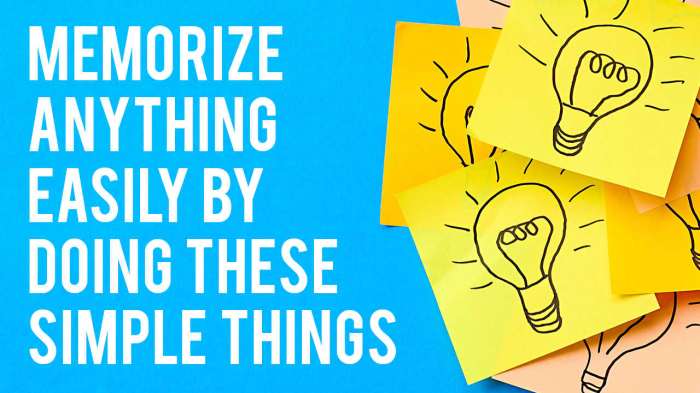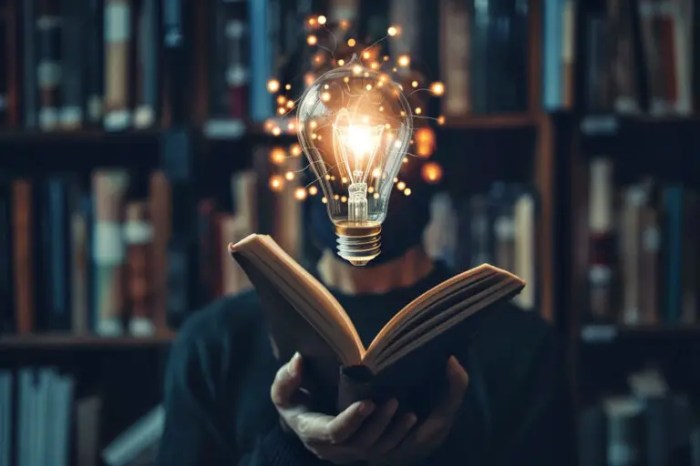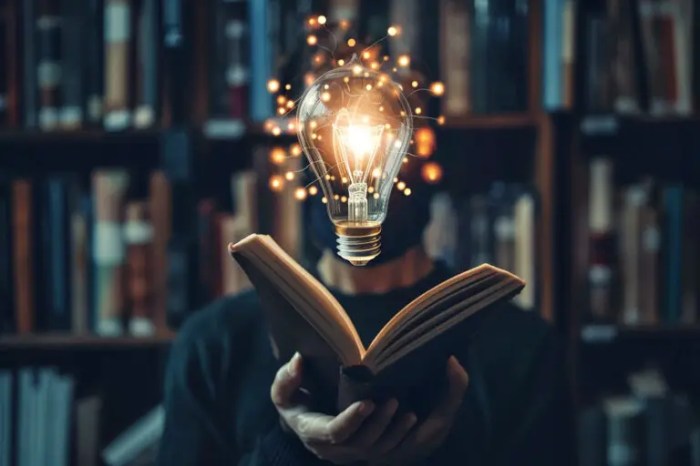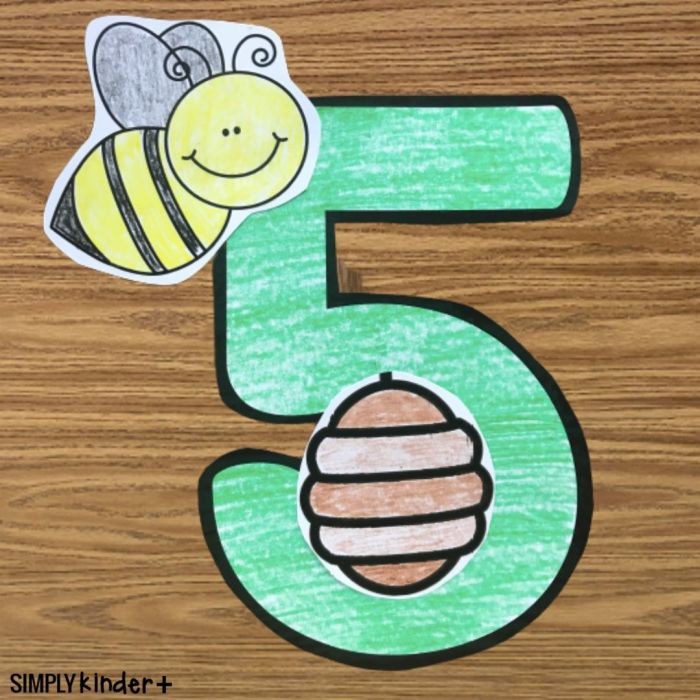How memorize things quicker than other people? This guide delves into proven strategies for boosting your memory. From effective learning techniques to the power of memory palaces, we’ll explore various methods to enhance your memorization skills. We’ll also examine the crucial roles of attention, sleep, and nutrition in optimizing your cognitive abilities.
Unlocking your memory potential involves understanding diverse learning styles and adapting techniques to suit your individual needs. This comprehensive approach considers the nuances of memory, from simple mnemonics to more complex strategies. Discover how to create a personalized memorization system that yields exceptional results.
Learning Strategies
Unlocking the secrets to faster learning isn’t about some mystical shortcut, but rather about strategically employing effective learning methods. It’s about understanding how your brain processes information and adapting techniques to maximize retention and comprehension. This approach goes beyond passive consumption and delves into active engagement with the material.Effective learning strategies aren’t one-size-fits-all; they need to be tailored to individual learning styles and the specific subject matter.
By understanding the strengths and weaknesses of various approaches, learners can craft personalized learning plans that maximize their potential. This understanding empowers individuals to identify the techniques that resonate most effectively with their cognitive processes.
Diverse Learning Strategies
Various learning strategies offer different avenues for acquiring and retaining information. Understanding their unique strengths and limitations allows learners to choose the best fit for their learning style and the subject at hand.
- Spaced Repetition Systems (SRS): SRS, like Anki, leverage the principle of spaced repetition to optimize memory. By reviewing material at increasing intervals, the brain strengthens memory traces. SRS is highly effective for memorizing facts, vocabulary, and formulas. A weakness is that it requires consistent and dedicated use for optimal results.
- Active Recall: Actively retrieving information from memory, rather than passively rereading, significantly enhances learning. This strategy forces the brain to work harder, leading to stronger memory encoding. Its strength lies in its ability to uncover gaps in understanding, allowing for targeted review. A potential weakness is that it can be time-consuming compared to other methods.
- Mnemonics: Mnemonics are memory aids that use imagery, rhymes, or other associations to link new information to existing knowledge. Visual and auditory mnemonics can make complex information more memorable. A drawback is that their effectiveness depends on the learner’s creativity and the nature of the material.
- Interleaving: Mixing different topics or concepts during study fosters a deeper understanding. This approach helps differentiate concepts and strengthens long-term memory. A potential challenge is that it might initially feel less structured than studying one subject at a time.
- Elaboration: Elaboration involves connecting new information to existing knowledge and experiences. This creates richer, more meaningful connections, improving retention and comprehension. A possible weakness is that it requires a strong foundational understanding of the subject matter.
Adapting Strategies for Different Subjects and Learning Styles
Learning strategies should be adaptable to suit different learning styles and subject matter. For example, a visual learner might benefit from using mind maps for memorizing historical events, while an auditory learner might find success in recording and listening to lectures. Likewise, active recall might be ideal for memorizing mathematical formulas, while mnemonics could be effective for recalling complex scientific concepts.
Examples of Successful Applications
Numerous individuals have successfully used specific strategies to enhance their memorization abilities. A student struggling with historical dates might employ an SRS to memorize key events, while a language learner might use mnemonics to remember vocabulary. A software engineer studying algorithms might find interleaving different programming languages beneficial.
The Role of Active Recall
Active recall plays a crucial role in memorization. By actively retrieving information from memory, learners reinforce neural pathways and improve their ability to access and apply knowledge later. Active recall encourages deeper engagement with the material, fostering a more robust understanding of the concepts. The strength of this technique is its ability to identify knowledge gaps and pinpoint areas needing further study.
Comparing Spaced Repetition Systems and Other Memory Techniques
| Feature | Spaced Repetition System | Active Recall | Mnemonics | Interleaving | Elaboration |
|---|---|---|---|---|---|
| Mechanism | Repeats material at increasing intervals | Retrieves information from memory | Uses imagery, rhymes, etc. | Mixes different concepts | Connects new information to prior knowledge |
| Strengths | Highly effective for memorization | Enhances understanding | Creates memorable associations | Improves concept differentiation | Deepens comprehension |
| Weaknesses | Requires consistent use | Can be time-consuming | Effectiveness depends on creativity | Can feel less structured | Requires existing knowledge base |
| Best Suited For | Facts, vocabulary, formulas | Concepts, procedures, problem-solving | Complex information, poems | Multiple subjects, problem-solving | Connecting new ideas to existing knowledge |
Memory Palace Techniques
Unlocking the power of visualization and spatial memory can significantly enhance your ability to memorize vast amounts of information. The memory palace technique, also known as the method of loci, is a powerful mnemonic device that leverages your spatial memory to create a mental journey through a familiar environment. Its roots lie in ancient Greek and Roman orators and scholars who utilized this method for remembering lengthy speeches and complex arguments.The core concept is simple yet profound: you associate items you need to remember with specific locations within a familiar space, such as your home, a neighborhood street, or even a fictional building.
This process transforms abstract information into concrete, visual representations, making it easier to recall.
The Memory Palace: Creating Your Mental Space
The process begins with selecting a well-known and easily visualized location. This becomes your memory palace. Imagine a detailed map of your home, your office, or even a favorite route you walk daily. Visualize each room, object, and detail. This detailed mental representation is crucial.
Steps in Building Your Memory Palace
- Visualization: Begin by thoroughly visualizing your memory palace. Imagine the layout, the colors, and the details of each room or area. This detailed visualization is essential for recall.
- Anchoring Information: Now, take the information you want to memorize and mentally place it within specific locations in your palace. For example, if you need to remember a list of grocery items, imagine a specific item placed on a specific counter in your kitchen.
- Mental Journey: Create a mental journey through your palace. As you mentally move through the locations, you will retrieve the associated information. The mental journey reinforces the connections between locations and information.
- Review and Reinforcement: Regularly review your mental journey to reinforce the connections and improve recall. The more you practice, the stronger the memory palace becomes.
Applying the Memory Palace to Different Subjects
The memory palace technique is incredibly versatile. It can be applied to various subjects, making memorization easier and more enjoyable.
- Lists: Imagine each item on your shopping list placed in a specific location within your home. Imagine a loaf of bread on the kitchen counter, milk in the refrigerator, and eggs in the pantry. Visualizing these locations and items together will make remembering the list effortless.
- Dates and Events: Associate significant dates with locations within your palace. For example, if you need to remember the date of a historical event, imagine a prominent historical figure standing near a specific landmark in your memory palace. This links the information to a spatial location and facilitates retrieval.
- Formulas and Equations: Visualize the components of the formula or equation as objects in specific locations. This visual representation transforms abstract concepts into tangible images that are easier to remember.
Visual Imagery in the Memory Palace
Visual imagery is the cornerstone of the memory palace technique. The more vivid and detailed your mental images, the easier it will be to recall the associated information. For instance, imagine a particularly large and vibrant orange to remember the word “orange”. The more detail you include (the exact shade, the texture, etc.), the more easily you will recall it.
Key Elements and Benefits of Memory Palaces
| Element | Benefit |
|---|---|
| Visual Imagery | Creates strong, memorable associations. |
| Spatial Memory | Leverages your natural ability to navigate and remember spaces. |
| Mental Journey | Reinforces connections between information and locations. |
| Repetition and Review | Strengthens memory traces over time. |
Mnemonics and Acronyms
Unlocking the power of memory isn’t just about memorizing facts; it’s about forging connections and creating memorable links. Mnemonics, those clever memory aids, are a powerful tool to transform seemingly daunting information into easily recalled patterns. They leverage the brain’s natural inclination to associate and organize, making learning a more engaging and effective process.Mnemonics work by associating new information with existing knowledge or memorable images, making it easier to retrieve.
This process builds a mental framework, making the information more accessible and reducing the effort required for recall. Acronyms, a specific type of mnemonic, are particularly useful for condensing information into easily remembered abbreviations.
I’ve always wondered how some people seem to absorb information like sponges, memorizing things quicker than the rest of us. Maybe it’s all about finding effective strategies, like those discussed in the article about the secret making resolutions work year , which could translate into a better approach to learning. Regardless, consistent effort and a solid plan are key to retaining knowledge efficiently.
It’s all about finding the method that works best for you, isn’t it?
Effectiveness of Mnemonics
Mnemonics significantly enhance memory recall by providing a framework for organizing and storing information. The process of creating and associating mnemonics activates different parts of the brain, strengthening neural pathways and making the information more readily accessible. This is especially helpful for complex or lengthy material, allowing learners to break down challenging concepts into manageable pieces.
Different Types of Mnemonics
Various mnemonic techniques exist, each with its unique approach to memory enhancement. Understanding these different types allows for a tailored approach to learning.
- Acronyms: These are abbreviations formed from the first letters of a series of words, creating a pronounceable word or phrase. For example, ROY G. BIV (Red, Orange, Yellow, Green, Blue, Indigo, Violet) is an acronym for the colors of the rainbow.
- Acrostics: These use the first letter of each word in a phrase to form a sentence or poem. For example, using the first letters of the planets in our solar system (Mercury, Venus, Earth, Mars, Jupiter, Saturn, Uranus, Neptune) to form a memorable phrase like “My Very Educated Mother Just Served Us Nine Pizzas”.
- Rhymes: Rhyming words or phrases create strong associations, making the information easier to remember. For instance, “Thirty days hath September, April, June, and November…” is a rhyming mnemonic for remembering the number of days in each month.
- Visual Imagery: This involves creating vivid mental images to associate with the information. If you need to remember a list of items, visualize them in a unique, memorable location, like a walk through your house. This technique is closely linked to the Memory Palace method.
Applying Mnemonics to Subject Matter
Mnemonics can be applied across a broad range of subjects. For instance, in science, recalling the order of the elements in the periodic table can be facilitated by acronyms or rhymes. In history, linking key events with memorable images or stories can significantly enhance comprehension and recall. In mathematics, formulas and equations can be associated with visual representations or rhymes.
Creating Effective Mnemonics
Crafting effective mnemonics involves several key steps. First, understand the material thoroughly. Second, identify key concepts or details. Third, choose a mnemonic device (acronym, acrostic, rhyme, or visual imagery) that aligns with the material and your learning style. Finally, actively engage with the mnemonic by visualizing and rehearsing it.
Common Mnemonic Devices and Applications
| Mnemonic Device | Application |
|---|---|
| Acronyms | Remembering lists, formulas, processes |
| Acrostics | Memorizing poems, historical events, lists of vocabulary |
| Rhymes | Learning dates, historical facts, or scientific concepts |
| Visual Imagery | Remembering complex information, sequences, or lists by associating them with visual mental images. |
Attention and Focus: How Memorize Things Quicker Than Other People
Unlocking your memory potential isn’t just about memorization techniques; it’s fundamentally about harnessing your ability to focus and pay attention. Attention acts as a gatekeeper, filtering the vast amount of information bombarding our senses and allowing only the relevant data to reach our conscious awareness and ultimately, our memory. Effective focus translates to more efficient encoding and retrieval of information, leading to better retention and recall.Effective memorization hinges on sustained attention.
Without focused attention, incoming information is likely to be fragmented and incomplete, making it harder to consolidate and retrieve later. This principle highlights the critical role of attention in shaping our ability to learn and remember.
Relationship Between Attention and Memory
Attention is the cognitive process that allows us to selectively concentrate on specific stimuli while filtering out others. This selective filtering is crucial for effective learning. When attention is focused, sensory information is processed more thoroughly, leading to stronger memory traces. Conversely, when attention is divided or wandering, information processing is less efficient, and memory encoding suffers. This intricate connection underscores the importance of developing strong attentional control for optimizing memory performance.
Techniques to Improve Focus and Concentration, How memorize things quicker than other people
Cultivating focus and concentration is a skill that can be honed with consistent practice. Various techniques can be employed to enhance this crucial cognitive function. Mindfulness practices, for instance, encourage present moment awareness, fostering a sense of calm and attentiveness that promotes better focus during study sessions.Regular exercise is another powerful tool. Physical activity boosts blood flow to the brain, providing the necessary oxygen and nutrients for optimal cognitive function, including sustained attention.
Adequate sleep is equally important. Sufficient rest allows the brain to consolidate memories and prepare for new learning, which in turn, improves focus and concentration.
Common Distractions and Mitigation Strategies
Numerous distractions can derail our focus and hinder memorization. These distractions range from external stimuli like noise and interruptions to internal distractions like anxieties and fidgeting. To mitigate these distractions, creating a dedicated study space free from interruptions is essential. This could involve using noise-canceling headphones, finding a quiet library corner, or informing others of your need for focused time.Time management techniques, such as the Pomodoro Technique, can also be highly effective.
This method involves working in focused intervals followed by short breaks, allowing the mind to rest and recharge. Similarly, recognizing and addressing internal distractions, such as stress or anxiety, is crucial. Techniques like deep breathing exercises, meditation, or engaging in relaxing activities can help manage these distractions.
Comparing and Contrasting Attention Enhancement Methods
Different methods for enhancing attention span offer varying approaches. Mindfulness training, for example, focuses on present moment awareness, cultivating a sense of calm and reducing mental chatter. Cognitive training programs, on the other hand, target specific cognitive functions, including attention, through exercises and tasks designed to improve attentional control.Both approaches aim to improve attentional control, but they differ in their emphasis and methodology.
Mindfulness training cultivates a general state of attentiveness, while cognitive training directly targets specific aspects of attentional processes. Choosing the right method depends on individual needs and preferences.
Figuring out how to memorize things faster than others often boils down to finding effective strategies. But sometimes, the biggest obstacle isn’t the material itself, but rather the mental blocks we create. Just like how parents are their own worst enemies in many ways, we too can be our own biggest roadblocks to learning. Ultimately, it’s about breaking down the process and finding what works best for you, not trying to mimic others.
Strategies for Managing Attention and Focus During Study Sessions
| Strategy | Description ||——————————–|——————————————————————————————————————————————————————————————————–|| Create a dedicated workspace | Designate a specific area for study, free from distractions, to signal to your brain that this is a focus zone.
|| Minimize external stimuli | Reduce background noise, turn off notifications, and ensure your workspace is organized and clutter-free to maintain a focused environment.
|| Employ the Pomodoro Technique | Work in focused intervals (e.g., 25 minutes) followed by short breaks (e.g., 5 minutes) to maintain concentration and prevent mental fatigue.
|| Practice mindfulness | Incorporate mindfulness exercises like deep breathing or meditation to improve present moment awareness and reduce mental wandering.
|| Prioritize tasks | Create a to-do list and prioritize tasks to manage workload and avoid feeling overwhelmed, thus improving focus.
|| Stay hydrated and nourished | Maintain optimal hydration and nutrition levels to support brain function and sustained attention.
|
Sleep and Nutrition
Fueling your brain for optimal learning requires more than just effective memorization techniques. The crucial role of sleep and nutrition often gets overlooked, but these factors significantly impact your cognitive abilities, including memory formation. Understanding how sleep consolidates memories and how specific nutrients support brain function is key to unlocking your full learning potential.Proper sleep and a balanced diet are fundamental for memory consolidation and cognitive function.
The brain actively processes and strengthens memories during sleep, a process known as memory consolidation. Similarly, specific nutrients play a vital role in supporting brain health and optimal cognitive performance. By understanding the intricate relationship between these factors, you can optimize your learning and memory abilities.
Impact of Sleep on Memory Consolidation
Sleep is not just a period of rest; it’s a crucial time for the brain to process and consolidate memories. During sleep, the brain replays and strengthens neural pathways formed during the day. This process strengthens the connections between neurons, making memories more resilient and easier to recall. Studies have shown that sleep deprivation significantly impairs memory consolidation, making it harder to learn and remember new information.
Importance of Proper Nutrition for Cognitive Function
A balanced diet is essential for supporting optimal cognitive function. Nutrients like vitamins, minerals, and antioxidants play a critical role in protecting brain cells from damage and supporting healthy neural communication. A diet rich in fruits, vegetables, lean proteins, and healthy fats provides the necessary building blocks for optimal brain function.
Dietary Choices That Support Memory
Certain dietary choices can significantly support memory function. A diet rich in omega-3 fatty acids, found in fatty fish like salmon and tuna, is crucial for brain health. Antioxidants, abundant in fruits and vegetables, protect brain cells from damage. Foods rich in vitamin B12, such as meat and dairy products, are vital for nerve function and support memory processes.
How Sleep Deprivation Affects the Ability to Memorize Information
Sleep deprivation disrupts the brain’s ability to consolidate memories. When sleep is insufficient, the brain doesn’t have the opportunity to strengthen and organize the neural pathways associated with new information. This results in decreased memory capacity and difficulty recalling learned material. For example, students who consistently pull all-nighters before exams often struggle to perform as well as those who prioritize adequate sleep.
Role of Specific Nutrients in Memory Processes
Specific nutrients play a crucial role in various aspects of memory processes. Antioxidants, like vitamins C and E, protect brain cells from damage caused by free radicals, contributing to better memory retention. Omega-3 fatty acids are vital for the structure and function of brain cell membranes, enhancing the efficiency of neural communication. Vitamin B12 is essential for nerve function and supports memory processes.
For instance, individuals with deficiencies in vitamin B12 often experience memory problems. A diet rich in these nutrients can significantly enhance memory and cognitive function.
Review and Repetition

Repetition isn’t just about rote memorization; it’s about strengthening neural pathways and solidifying knowledge. Effective review methods leverage the power of spaced repetition, allowing information to be encoded more deeply in your memory. This process, when implemented correctly, transforms fleeting recall into lasting retention.Review and repetition isn’t a one-size-fits-all approach. The optimal strategy depends on the type of material and your individual learning style.
By understanding the principles of spaced repetition and tailoring your review methods, you can significantly improve your ability to retain information and access it when needed.
Significance of Spaced Repetition
Spaced repetition is a cornerstone of effective learning. It leverages the psychological principle of memory consolidation, where repeated exposure to information over increasing intervals strengthens the memory trace. This principle contrasts with cramming, which often leads to short-term retention without lasting impact. The key is not to repeat the material constantly, but to strategically revisit it at optimal intervals.
Importance of Increasing Intervals
Reviewing material at increasing intervals allows the brain to actively process and consolidate the information. This method helps prevent the phenomenon of “memory decay,” where information fades over time. By strategically revisiting material at increasing intervals, you force your brain to actively retrieve and re-encode the information, creating stronger neural connections.
Methods for Effective Review and Repetition
Effective review methods involve active recall, practice tests, and using tools like flashcards. The goal is to challenge your memory and force yourself to retrieve the information without looking at the original material.
- Active Recall: This involves actively trying to retrieve information from memory without looking at the source. Quizzing yourself on the material is a powerful method for strengthening recall.
- Practice Tests: Creating and taking practice tests helps you identify areas where you need further review. This targeted approach improves your ability to apply the knowledge in different contexts.
- Flashcards: Flashcards are a versatile tool for reviewing material. Using spaced repetition software (e.g., Anki) can further optimize the review process, automatically adjusting the intervals based on your performance.
Different Review Strategies for Optimal Learning
Different review strategies suit different learning styles and types of material. Experiment with various methods to find what works best for you.
- Spaced Repetition Systems (SRS): SRS software, like Anki, uses algorithms to determine the optimal time intervals for reviewing material. These systems adapt to your performance, ensuring you spend more time reviewing information that’s more difficult to recall.
- Interleaving: Interleaving involves mixing different topics or concepts during review. This forces your brain to distinguish between similar concepts and improves long-term retention.
- Elaboration: Elaboration involves connecting new information to existing knowledge and creating meaningful associations. This method enhances understanding and strengthens memory traces.
Effective Repetition Schedules
The optimal repetition schedule depends on the type of material. Complex concepts often require more frequent and focused review than simpler facts. This table provides a general guideline.
Ever wondered how some people seem to memorize things faster? It might not just be about rote memorization, but also about incorporating holistic approaches. For instance, exploring alternative therapies like those in integrative medicine, where your doctor might prescribe actions instead of medications, can significantly impact memory and overall well-being. Integrative medicine what your doctor prescribed actions instead medications can help improve focus and cognitive function, ultimately leading to better memory retention.
So, if you’re looking to boost your memory, consider a multi-faceted approach, incorporating healthy lifestyle choices and exploring different strategies.
| Material Type | Initial Review Interval | Subsequent Review Intervals (Example) |
|---|---|---|
| Basic Facts | 1 day | 3 days, 7 days, 15 days, 30 days |
| Complex Concepts | 2-3 days | 5 days, 10 days, 20 days, 40 days |
| Equations or Formulas | 1 day | 2 days, 4 days, 8 days, 16 days |
Emotional State and Learning
Our emotional state plays a crucial role in our ability to learn and retain information. A calm, focused mind is far more receptive to new knowledge than one riddled with stress or anxiety. Understanding this connection allows us to optimize our learning environment and maximize our cognitive potential.The relationship between our emotional state and our capacity for learning is multifaceted.
Positive emotions such as joy, enthusiasm, and curiosity can significantly enhance memory formation, while negative emotions like fear, anger, and stress can hinder it. This understanding is key to unlocking effective learning strategies that cater to our individual emotional needs.
Impact of Stress and Anxiety on Memory
Stress and anxiety can negatively impact memory in several ways. The stress response, often triggered by perceived threats or challenges, releases hormones like cortisol that, while helpful in short bursts, can disrupt memory consolidation. Chronic stress can even lead to structural changes in the brain, impacting the hippocampus, a crucial area for memory formation. This disruption leads to difficulties in encoding and recalling information.
For example, students facing impending exams often experience increased stress, which can negatively affect their ability to focus and retain information, hindering their overall academic performance.
Strategies for Managing Stress and Anxiety During Study Sessions
Effective stress management techniques are essential for optimal learning. Implementing relaxation techniques during study breaks can significantly reduce stress levels and improve focus. Deep breathing exercises, progressive muscle relaxation, and mindfulness practices can help calm the nervous system, promoting a more receptive state for learning. Creating a dedicated, quiet study space can also help minimize distractions and create a calming atmosphere.
- Deep Breathing Exercises: These exercises help regulate the nervous system, reducing the physiological effects of stress. Slow, deep breaths engage the parasympathetic nervous system, counteracting the stress response and promoting relaxation. Incorporating these exercises during study breaks can significantly improve focus and memory consolidation.
- Progressive Muscle Relaxation: This technique involves systematically tensing and relaxing different muscle groups. By consciously releasing tension, individuals can reduce physical and mental stress, creating a more conducive environment for learning.
- Mindfulness Practices: Mindfulness involves paying attention to the present moment without judgment. Regular mindfulness practice can help individuals develop greater awareness of their thoughts and feelings, reducing the impact of stress and anxiety on learning. Even a few minutes of focused attention on the present moment can create a significant difference.
- Creating a Dedicated Study Space: A dedicated, quiet, and organized study space can minimize distractions and create a calming environment. A comfortable chair, good lighting, and minimal clutter can foster focus and concentration, significantly enhancing the learning process.
Role of Positive Emotions in Enhancing Learning
Positive emotions such as joy, enthusiasm, and curiosity create a more receptive and focused mental state. These emotions facilitate the release of neurochemicals associated with learning and memory. A positive emotional state allows for greater engagement with the material, leading to deeper processing and enhanced memory consolidation. A student excited about a subject is more likely to actively engage with the material and retain it.
Techniques for Creating a Conducive Learning Environment
Creating a supportive and stimulating learning environment is critical for optimal cognitive function. A well-lit, organized, and comfortable study space can reduce distractions and promote focus. Encouraging social interaction and collaboration can foster a sense of community and shared learning, boosting motivation and engagement. Creating a comfortable and safe environment where students feel supported and encouraged can significantly impact their learning.
- Optimizing the Physical Environment: A well-lit, organized, and comfortable study space can significantly reduce distractions and improve focus. Natural light, comfortable seating, and minimal clutter are key elements in creating a conducive learning environment.
- Promoting Social Interaction: Learning in a group or with peers can foster a sense of community and shared learning. Collaboration can boost motivation and encourage deeper engagement with the material. Discussing concepts with others can enhance understanding and retention.
- Cultivating a Supportive Atmosphere: Creating a supportive learning environment where students feel encouraged and understood can significantly impact their learning experience. A sense of belonging and support can motivate students to actively participate in the learning process.
Individual Differences
Unlocking your unique learning potential is crucial for effective memorization. We all absorb and process information differently. Recognizing these individual variations in learning styles and memory types is the first step toward optimizing your learning journey. Understanding your own strengths and weaknesses allows you to tailor your approach, maximizing your capacity to retain and recall information.Learning styles are not fixed; they are flexible and can be adapted.
By understanding the diverse ways we learn, we can unlock our full cognitive potential. This allows us to choose the strategies and techniques that best resonate with our personal preferences.
Learning Styles and Memory Types
Different individuals have distinct preferences in how they absorb and process information. Visual learners might excel at diagrams and charts, while auditory learners thrive on lectures and discussions. Kinesthetic learners benefit from hands-on activities and practical application. Understanding your learning style is key to tailoring your learning methods. Memory types, such as visual, auditory, and kinesthetic, further refine this understanding.
Identifying Learning Strengths and Weaknesses
Identifying personal learning strengths and weaknesses involves self-reflection and experimentation. Pay close attention to how you learn best. Observe which methods engage you more deeply and lead to better retention. Consider situations where you struggled to grasp concepts; these can point to areas needing improvement. Experiment with different learning techniques, noting which ones result in greater comprehension and recall.
Strategies for Adapting Learning Methods
Tailoring learning methods to individual preferences involves adapting your approach based on your strengths and weaknesses. If you’re a visual learner, incorporate diagrams, mind maps, and flashcards. If you’re an auditory learner, consider lectures, discussions, and recordings. For kinesthetic learners, hands-on activities, role-playing, and practical exercises are effective. By combining various methods, you can enhance your overall learning experience.
Table of Learning Styles and Strategies
| Learning Style | Associated Strategies |
|---|---|
| Visual | Creating mind maps, using diagrams, highlighting key concepts, utilizing visual aids, flashcards with images |
| Auditory | Repeating information aloud, listening to lectures or recordings, participating in discussions, creating verbal summaries, using rhymes and songs |
| Kinesthetic | Hands-on activities, practical exercises, role-playing, building models, creating physical representations of concepts |
| Read/Write | Taking notes, summarizing information in writing, reading aloud, creating Artikels, and using different colors for highlighting |
Note: This table provides a general overview. Individuals may exhibit a blend of learning styles, and the effectiveness of strategies can vary based on the subject matter.
Last Point

In conclusion, mastering the art of memorization isn’t about rote learning but rather about strategically employing various techniques. By understanding learning styles, implementing memory aids, and prioritizing focus, sleep, and nutrition, you can significantly enhance your cognitive abilities. This approach allows you to memorize information quicker and more effectively. Experiment with different strategies to find what works best for you, and watch your memory soar!











